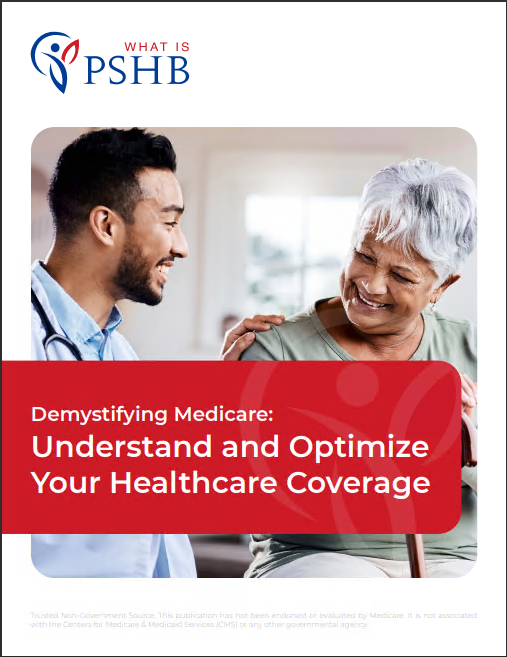Key Takeaways
-
Your copayment amount varies based on the type of medical service and whether you visit an in-network or out-of-network provider.
-
Understanding how copayments work within the PSHB structure can help you manage your out-of-pocket healthcare expenses more effectively.
Breaking Down Your PSHB Copayments
As a Postal Service Health Benefits (PSHB) member, you might think you have a solid grasp of your healthcare costs, but there’s more to it than just paying a fixed amount at each doctor visit. Copayments are a key part of your total healthcare spending, and knowing how they work can help you avoid unexpected costs throughout the year.
What Are Copayments and How Do They Work?
Copayments, often called “copays,” are the fixed amounts you pay out-of-pocket for specific healthcare services. Unlike deductibles, which require you to pay a certain amount before your plan starts covering costs, copays apply to each visit, prescription, or service you receive. These costs are set by your PSHB plan and vary depending on the type of service and whether you use an in-network or out-of-network provider.
How Copays Differ from Other Out-of-Pocket Costs
Your total out-of-pocket healthcare expenses under PSHB include more than just copayments. You also have:
-
Deductibles – The amount you must pay before your plan starts covering certain services.
-
Coinsurance – A percentage of costs you share with the plan after meeting your deductible.
-
Out-of-Pocket Maximum – The cap on what you pay in a year before your plan covers 100% of costs.
Understanding these distinctions is crucial because some services may require both a copay and coinsurance, depending on your plan’s structure.
Copayments for Different Types of Services
Your copayments vary depending on the type of medical service you receive. Here’s what you should expect:
Primary Care vs. Specialist Visits
-
Primary Care Physician (PCP) Visits: These generally have a lower copay to encourage routine healthcare and preventive services.
-
Specialist Visits: If you need to see a cardiologist, dermatologist, or another specialist, expect a higher copay.
Urgent Care vs. Emergency Room
-
Urgent Care: Lower copays make this a cost-effective alternative to emergency rooms for non-life-threatening issues.
-
Emergency Room: Emergency visits tend to have the highest copays to discourage unnecessary use, though they are crucial in true emergencies.
Prescription Drug Copays
Your copay amount for medications depends on your PSHB plan’s formulary, which categorizes drugs into different tiers:
-
Generic Drugs: Lower copays make them the most affordable option.
-
Brand-Name Drugs: Higher copays than generics but may be necessary for some conditions.
-
Specialty Medications: The highest copays due to their cost and complexity.
In-Network vs. Out-of-Network Costs
Your copayments will be significantly lower when you use in-network providers. Here’s why:
-
In-Network Providers: These providers have agreed to negotiated rates, keeping your costs lower.
-
Out-of-Network Providers: You’ll face higher copays, and in some cases, additional charges beyond your plan’s coverage limits.
How Copays Affect Your Annual Healthcare Budget
Since copayments are fixed, they make budgeting for healthcare expenses more predictable. However, frequent visits, specialist care, or long-term medication use can quickly add up. Being strategic about your healthcare choices can help reduce these costs:
-
Use preventive services covered at no additional cost under your plan.
-
Choose in-network providers whenever possible.
-
Opt for generic medications to minimize prescription costs.
Maximizing Your Benefits While Minimizing Copay Costs
There are several ways you can reduce your overall out-of-pocket spending on copayments while still receiving quality care.
Utilize Preventive Services
Preventive screenings, vaccinations, and wellness visits are often covered without a copayment. Taking advantage of these services can help prevent costly medical issues later.
Consider Telehealth Services
Many PSHB plans offer virtual healthcare options, often with lower copays than in-person visits. This is a great way to access medical advice without the added travel or cost.
Compare Urgent Care and Emergency Services
For non-life-threatening situations, urgent care can provide the treatment you need at a fraction of the emergency room copay.
Know Your Prescription Drug Options
If a prescribed medication has a high copay, ask your doctor if a generic or lower-tier alternative is available.
Understanding Copay Changes Year to Year
Copayments can change from year to year as PSHB plans adjust benefits, so it’s important to stay informed about any updates that may affect your costs. Reviewing your plan details during Open Season each year ensures you remain on top of these changes and can make informed decisions about your coverage.
What Happens When You Reach Your Out-of-Pocket Maximum?
Once your total out-of-pocket costs (including copayments, deductibles, and coinsurance) reach the plan’s annual limit, your PSHB coverage kicks in at 100% for the rest of the year. This is a significant benefit, especially for those with high medical expenses.
Planning Ahead: What You Can Do Now
Being proactive about your healthcare choices can help you keep copayment expenses manageable. Start by:
-
Reviewing your plan’s summary of benefits to understand specific copay amounts.
-
Confirming that your preferred providers and pharmacies are in-network.
-
Exploring cost-saving options such as telehealth, preventive care, and mail-order prescriptions.
Staying informed about your copayments ensures you make the most of your PSHB benefits while keeping costs under control.
Need Help Understanding Your PSHB Coverage?
If you have questions about your plan or want to explore ways to optimize your healthcare spending, reach out to a licensed agent listed on this website. They can provide personalized guidance to help you make informed healthcare decisions.










